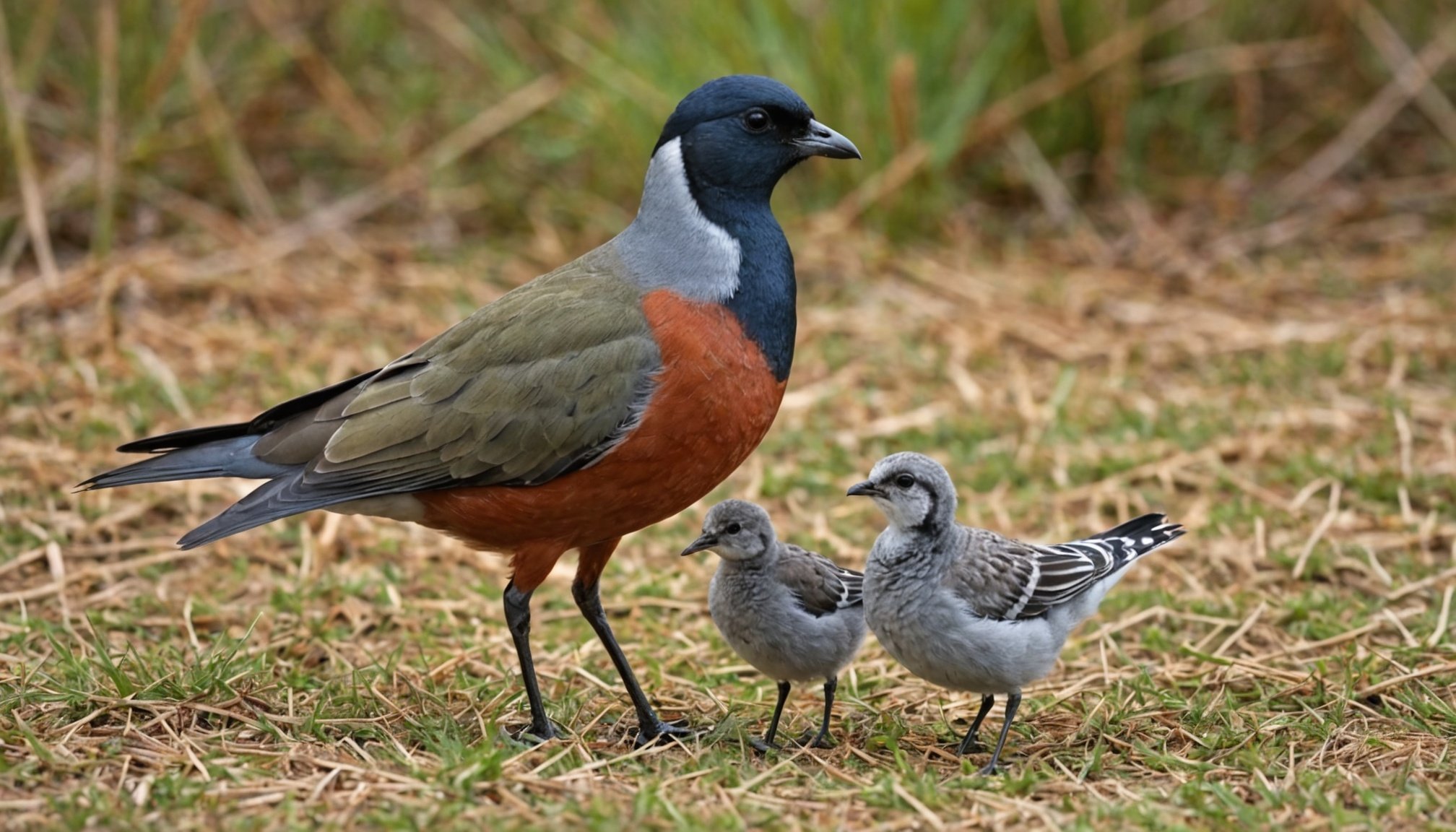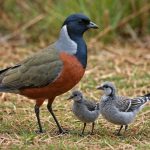Understanding Bird Behavior
Navigating the complex world of bird behavior can be an intriguing journey. Birds, much like humans, exist within intricate social structures vital to their community’s harmonious functioning. In avian societies, these social dynamics often dictate well-being, indicating stress, acceptance, or discord. For instance, preening is a behavior usually associated with acceptance and bonding. In contrast, excessive wing flapping or avoidance may signal stress.
When integrating birds, understanding these behavioral signals is essential in distinguishing between compatible and incompatible species. Birds from differing species may exhibit completely different social cues. Thus, recognizing subtle indicators can prevent conflicts, enhancing your bird’s social environment.
In parallel : Ace Loose Leash Walking: Ultimate Training Techniques for Your Dog
Moreover, social dynamics in birds involve complex hierarchies where dominance and submission are naturally expressed. Observing these dynamics before attempting to integrate new birds helps tailor strategies for introductions. Different bird species have varying tolerance levels for close proximity, dictating the space required.
Understanding these interactions requires patience and keen observation, allowing for suitable preparation for seamless bird integration. Recognizing that each species has distinctive behaviors and necessities that must be respected facilitates more effective management of your feathered friends.
Also to discover : Ace Loose Leash Walking: Ultimate Training Techniques for Your Dog
Preparing the Environment for Introduction
When it comes to integrating birds, environment preparation is a fundamental step that ensures a smoother transition. Creating a neutral space is crucial for new introductions, minimising territorial disputes and promoting harmonious interactions. Here’s how you can achieve this:
-
Start by rearranging bird housing to remove any familiar landmarks, which can reduce territorial behaviour. This new environment should be free of personal items belonging to either the existing or new birds.
-
Implementing essential modifications to existing habitats can further ease the process. These adjustments might include adding extra perches or feeding stations, allowing the birds to establish new routines as they explore the shared space.
-
The importance of having separate spaces before proceeding to full integration cannot be overstated. Initially, keep the birds in adjacent enclosures so they can see, hear, and smell one another without direct contact. This setup aids in reducing anxiety and preventing unintended aggression.
Proper environment preparation not only helps in lessening stress but also supports the development of positive social dynamics, paving the way for a successful bird integration. By carefully planning the environment, owners can facilitate natural curiosity and interaction among their feathered friends, leading to a more content flock.
Step-by-Step Introduction Process
Introducing birds into a shared space is a careful process. Following an introduction process ensures smoother bird integration and healthier relationships.
Initial Separation Phase
Begin with a separation phase where birds are housed in cages close enough to see and hear each other but without direct contact. This approach reduces anxiety and allows them to acclimate to each other’s presence while maintaining safety. Ensuring they’re in adjacent bird housing encourages familiarisation without triggering territorial behaviour.
Gradual Introduction Techniques
Gradually, supervised face-to-face introductions can occur in a neutral environment. Provide perches at different heights and widen the space to decrease potential territorial conflicts. Small, controlled interactions help reduce stress. Ensure you engage in these practices regularly to monitor how comfortable your birds become over time.
Monitoring Interactions
Carefully observe your birds during interactions. Look for behavioural signals like purring for contentment or screaming, which might suggest stress or discomfort. Safe physical barriers should be readily available to prevent accidental aggression. Determining the right timing for full integration depends on these observations; positive signs include relaxed behaviour and mutual preening. By understanding and managing these steps, bird owners can achieve a successful bird integration, enriching the flock’s social dynamics.
Addressing Common Challenges
Navigating integration challenges when merging birds can be a daunting task. Recognizing early signs of stress or aggression is pivotal. Behaviours like feather plucking, aggressive posturing, and persistent screeching indicate underlying tensions. Addressing such signs promptly is crucial to fostering a harmonious environment.
One effective strategy for mitigating conflicts involves introducing new enrichment activities to redirect energy. Incorporating new toys or puzzles encourages positive engagements, lessening the likelihood of conflicts. Additionally, changing or rearranging the layout of perches and feeding stations can break any negative behavioural patterns.
Should conflicts persist, it’s advisable to seek guidance from an avian behaviour specialist or veterinarian. Professionals can assess the social dynamics and provide tailored advice. Such expertise is invaluable when persistent issues arise, ensuring the welfare of both new and existing birds.
Implementing stress-reduction techniques such as providing quiet, dimly-lit environments during the integration period can also be beneficial. By staying attuned to your birds’ needs and being proactive in conflict resolution, you can significantly reduce the challenges of bird integration, paving the way for a peaceful coexistence.
Compatibility of Different Bird Species
Understanding Bird Species Compatibility is crucial when forming mixed flocks. Factors such as natural habitat, size, and temperament play pivotal roles in determining how well different species can coexist. Mixed flocks may have varying levels of acceptance, where species naturally accustomed to similar environmental conditions are often more compatible. This generally indicates better harmony among birds.
When considering flock combinations, research the behavioral traits specific to each species. For instance, certain parrot species may demonstrate territorial behavior, which can disrupt harmony in mixed settings. Other birds, like canaries, are known for their docility and are more adaptable to diverse flock arrangements.
Researching species-specific traits often reveals how certain birds interact. Such information helps in pairing species with similar social dynamics or those unlikely to exhibit severe territorial instincts. Before actual integration, it’s advisable to observe potential pairs within separate environments to gauge initial reactions.
Creating a harmonious mixed flock requires meticulous planning and a thorough understanding of each species’ social cues. Adequate knowledge ensures that incompatible pairings are avoided, thus reducing potential conflicts. By basing choices on research and observation, bird owners can cultivate peaceful, balanced flocks.
Expert Insights and Recommendations
Navigating avian dynamics can be complex, and having access to expert advice is invaluable for bird owners. Insights from avian behaviorists and veterinarians offer valuable perspectives on the nuances of bird integration and care.
Behaviorists emphasize understanding the natural social interactions of different bird species as a precursor to harmonious flock management. This involves recognising how certain birds, like those with a territorial temperament, might react when introduced to new flock members. They suggest gradual introductions and emphasizing enrichment activities to curb potential aggression.
Veterinarians focus on the importance of health monitoring during integration. Stress can manifest physically, impacting a bird’s well-being. Routine health assessments are crucial, ensuring birds are coping well with the social changes.
Recommended practices for managing flocks include developing a routine that fosters stability, such as consistent feeding times, which help mitigate stress. Integrating birds should also account for individual behavioral quirks, which behaviorists can help identify through targeted observations.
Ongoing education is crucial for avian enthusiasts. Engaging in workshops and accessing educational resources ensures continuous learning about effective care techniques. By following expert guidance and staying informed, bird owners can foster a supportive environment that promotes the well-being of their avian companions.
Visual Resources for Better Understanding
Navigating the world of bird behavior is a layered process, requiring both insight and patience. Engaging with visual aids enhances comprehension, particularly for bird owners attempting new integrations. Infographics serve as useful tools, vividly illustrating the steps involved in bird housing preparation and the introduction process. By breaking down tasks into visually manageable parts, they simplify complex concepts and offer a clear guide through various stages.
Additionally, videos provide dynamic examples of social dynamics in birds. They display real-time behaviors, enabling viewers to pinpoint cues such as acceptance or stress indicators. For example, videos can highlight subtle signs like purring, which indicates comfort, or feather ruffling, a possible sign of unease. Such firsthand demonstrations not only validate theoretical knowledge but also prepare bird owners for real-world applications.
Interpreting educational resources effectively is key to successful integration. When used together with visual tools, these resources deepen understanding of bird behaviors and social structures. Bird integration is nuanced, but by leveraging infographics and videos as supplementary aids, bird enthusiasts can navigate the process with greater confidence and accuracy, ensuring a nurturing environment for their avian companions.
Timeline for Integration
Integrating birds into a new environment requires a planned integration timeline to ensure a seamless transition. Proper timing is crucial, allowing both new and existing birds to acclimate without undue stress. Calculating the duration for safe introductions involves observing bird behaviours and adapting as necessary.
The process typically begins with a phased approach over days or weeks, starting with separate enclosures to allow initial observation and adjustment. During this time, existing birds and newcomers should gradually become familiar with one another’s presence. Monitoring for stress indicators, like persistent screeching or avoidance, is essential.
Key milestones include natural curiosity between birds and shared interest in activities like feeding. When comfortable interaction occurs without aggression, it’s a sign that integration is successful. Birds exhibiting relaxed postures and engaging in mutual preening are often considered ready for more direct contact.
Adjustments should remain flexible, respecting individual bird cues and readiness levels. The ultimate goal is to create a harmonious flock through attentive monitoring and responsiveness to each bird’s needs. Remember, each flock is unique, and achieving successful bird integration may require patience but results in a thriving community.








